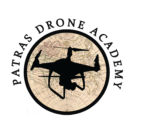In the age of the digital revolution, drones have transformed the way we see and interact with the world around us. From aerial photography and videography to infrastructure inspections and crop monitoring, their applications are now countless. But one of the most exciting and powerful tools that can be integrated into a drone is the thermal camera.
What is a Thermal Camera and how does it work?
Unlike conventional cameras that record visible light, a thermal camera “sees” heat. It detects the infrared radiation emitted by all objects (depending on their temperature) and converts it into a visual image, known as a thermogram. In the thermogram, the hottest spots are shown in bright colours (usually red, orange, yellow), while the coldest spots are shown in darker colours (blue, purple).
This ability to “see” heat makes the thermal camera invaluable in situations where visible light is insufficient or non-existent – such as at night, in fog or smoke, or when we want to detect temperature differences that are not visible to the naked eye.
Applications of Drones with Thermal Camera:
The integration of thermal cameras in drones has opened up new horizons in a multitude of professional and other applications:
-
Inspections and Maintenance:
- Photovoltaic Parks: Identify “hot spots” in solar panels that indicate malfunctions or damage, reducing inspection time and costs.
- Buildings & Insulation: Detect heat loss in roofs and walls, helping to identify insulation problems and save energy.
- Industrial Installations: Checking ducts, machinery and electrical panels for overheating, preventing damage and accidents.
- Bridges & Infrastructure: Identification of cracks, corrosion or other structural problems causing temperature differences.
-
Emergency Response & Emergency Response Security:
- Search and Rescue (SAR): locating missing persons in rough terrain, dense vegetation or at night, thanks to the heat signature of the human body.
- Firefighting: Assessing the extent of fires, identifying smoking hot spots and guiding firefighters in low visibility conditions.
- Policing & Surveillance: Surveillance of areas, identifying suspects or threats, especially in dark conditions.
-
Precision Agriculture & Environment:
- Crop Health: Detect irrigation problems, diseases or pests in crops as they affect plant temperature.
- Wildlife Monitoring: Counting and monitoring of animals in remote areas.
Why Education is Vital?
Simply buying a drone with a thermal camera is not enough. Proper use, interpretation of the data and understanding the limitations of thermography require specialized training. A properly trained operator can:
- Adjust the camera for optimal results.
- Identify and correctly interpret thermographs.
- Avoid errors that lead to inaccurate data.
- To take full advantage of the potential of this advanced technology.
- Ensure flight safety and data protection.
At Patras Drone Academy, we understand the importance of specialized knowledge. That’s why we offer comprehensive training programs for drone operators, including courses specific to the use and interpretation of thermal cameras. With experienced instructors and state-of-the-art equipment, you’ll gain the skills necessary to take full advantage of the capabilities of this amazing tool.
Whether you are a professional looking to expand your services or an enthusiastic hobbyist looking for new horizons, Patras Drone Academy is here to guide you.
Contact us today at 6976796666 to learn more about our programs and discover the world beyond the visible!

